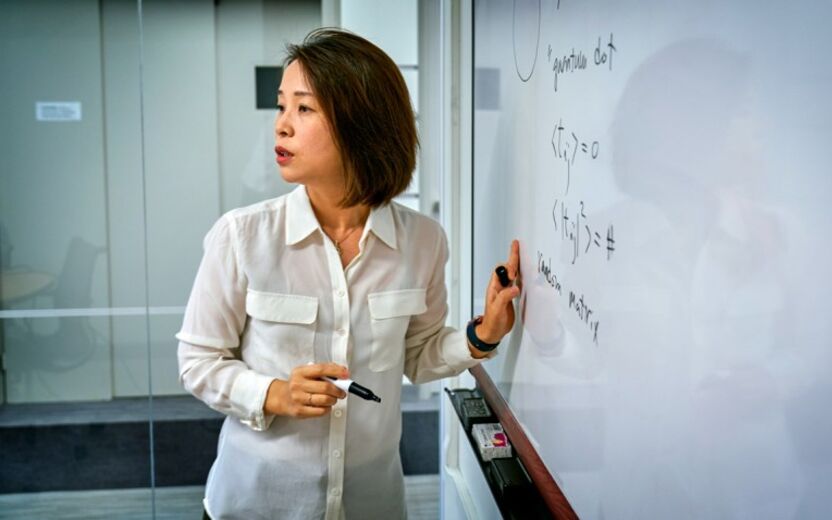Eun-Ah Kim and Yuri Lensky's protocol used to observe non-Abelian anyons by Google Quantum AI

Kim & Lensky’s Recipe: “Twist Defects” & Non-Abelian Magic
The idea of using non-Abelian anyons in quantum computing was theorized about 20 years ago by Alexei Kitaev. Since then, experimental evidence of non-Abelian anyons has been accumulating, but it has often been ambiguous and also hard to reproduce. Professor Eun-Ah Kim and former postdoc Yuri Lensky, in collaboration with theorists at Google Quantum AI, figured out a simple step-by-step recipe to manipulate and braid non-Abelian anyons.
Google Quantum AI then successfully used this recipe to take qubits and generate non-Abelian anyons by stretching and squashing the qubits’ quantum states. Thanks to Lensky and Kim’s recipe, they were able to move the non-Abelian anyons around. When two particles were swapped, there was a measurable change in the system’s quantum state, which was proof that they had successfully generated non-Abelian anyons. These results are a promising step towards fault-tolerant quantum computing.
Featured On:
- Neuroscience News 5/13/23 (News release by Google Quantum AI)
- Cornell Chronicle 5/12/23
- Quanta Magazine 5/9/23
- Phys.org 4/12/23 (On the Google Quantum AI preprint)
Protocol on arXiv: "Graph gauge theory of mobile non-Abelian anyons in a qubit stabilizer code"
Primer: Quantum Computing & Non-Abelian Anyons
You can probably skip this section if you’re a physicist.
Quantum Physics & Non-Abelian Anyons
- Quantum physics is the study of atomic and subatomic particles and the (often strange) ways in which they behave.
- “Superposition” is a foundational principle of quantum mechanics, where a particle exists in more than one state at the same time. For example, an electron can be in two places at once. But when we measure it, it appears to be in one place. (A good video on this can be found here, and more from the Quantum Made Simple project.)
- Anyons are a kind of “quasiparticle,” which are entities made of energy that behave like particles but aren’t made of matter, so they aren’t actually particles. Anyons can only exist in two-dimensional space.
- Non-Abelian anyons were theorized to have a sort of “memory” allowing you to tell if two otherwise identical particles had swapped places. As a result, non-Abelian anyons leave a trail of where they were before called a “world-line.”
Quantum Computing
- Quantum computing builds on superposition. “Classic” computing relies on fundamental units called “bits” that can be in either one state or another (0 or 1). Quantum computing’s base unit, the “qubit,” can hold up to two bits of information via superposition.
- One limitation of quantum computing as it currently stands is error correction. Quantum particles are delicate. It’s hard to keep them stable and safe from environmental noise, and you can’t measure the quantum state directly (to, say, check for errors) without destroying it.
- Topological quantum computers that braid together non-Abelian anyons would be a theoretical improvement on error correction difficulties, because there’s a way to get around the “no observing/measuring” issue: information is encoded in the way two or more quasiparticles interact with each other rather than in a particle itself.
Author: Marin Czymmek
